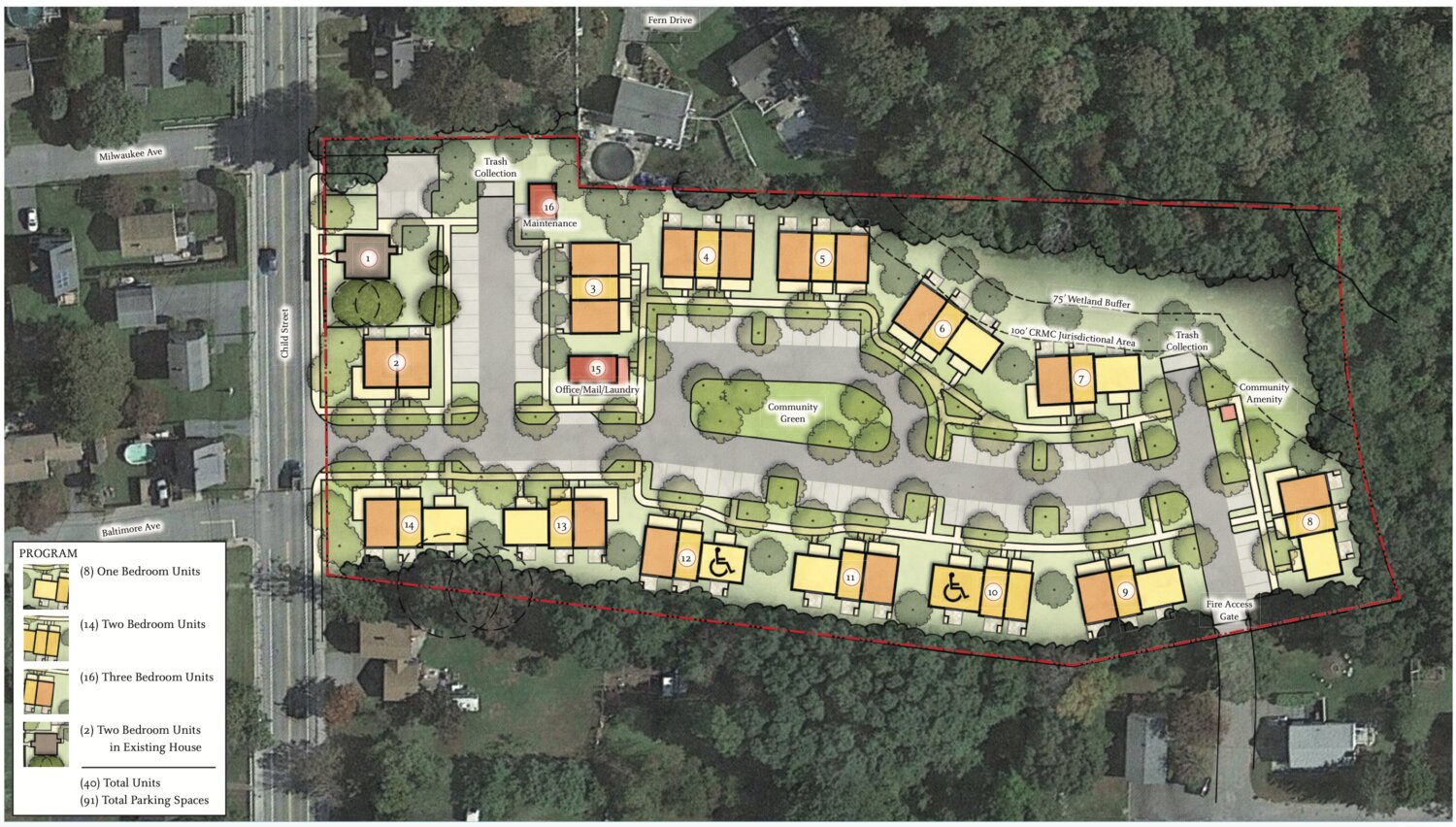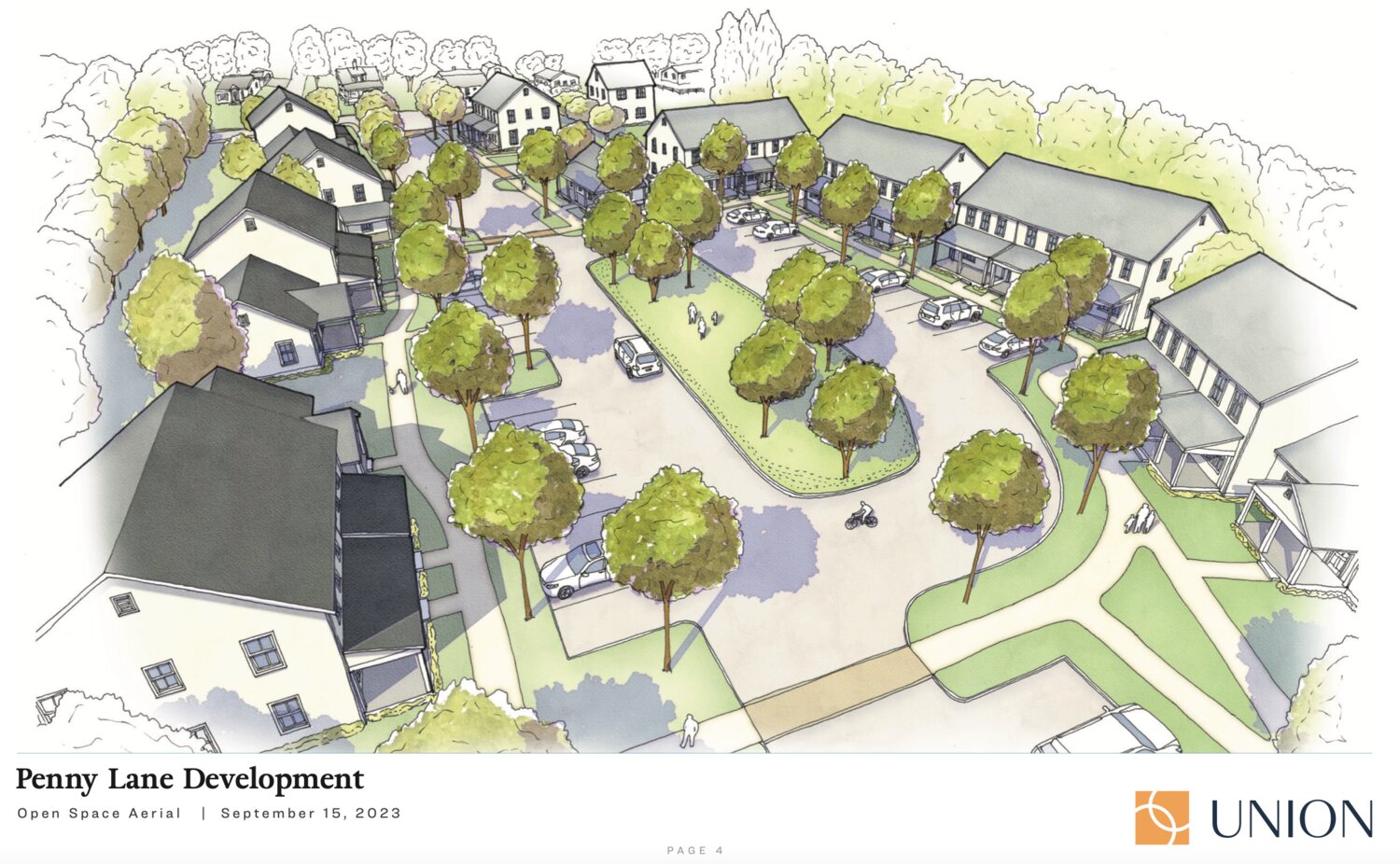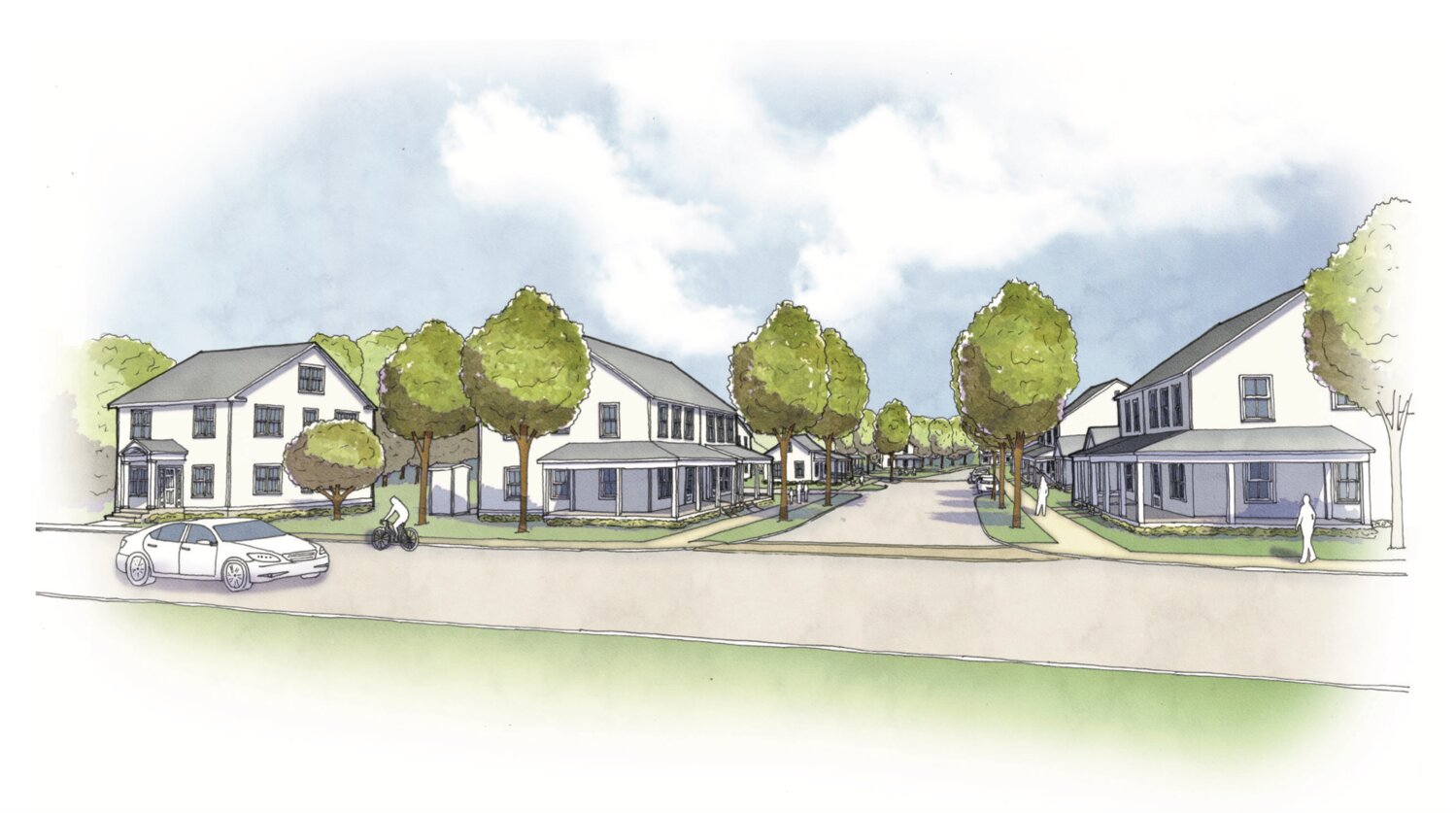Warren Planning Board denies Child Street development at proposed density
While the board actually voted to approve the project by a 5-1 margin, it was done so only under the condition that the number of units be decreased in order to reduce the density of the development.
This item is available in full to subscribers.
Please log in to continue |
Register to post eventsIf you'd like to post an event to our calendar, you can create a free account by clicking here. Note that free accounts do not have access to our subscriber-only content. |
Day pass subscribers
Are you a day pass subscriber who needs to log in? Click here to continue.
Warren Planning Board denies Child Street development at proposed density
After more than two hours of discussion, the Warren Planning Board on Wednesday evening effectively denied a 40-unit affordable rental housing development proposed to be built on a 4.5-acre parcel of mostly undeveloped land at 581 Child St.
While the board actually voted to approve the development by a 5-1 margin, it was done so only under the condition that the number of units be decreased in order to reduce the density of the development to something more in the range of 25-30 units.
“At first blush, it’s a winner…And hat’s off to you for the work you’ve done on it, and the intention of providing it,” Planning Board Chairman Frederick Massie said. “The question is, is this the right place for that level of density?”
The development, dubbed “Penny Lane” by the applicant (the nonprofit East Bay Community Development Corporation), called for the construction of 14 townhouses to house a mixture of one-bedroom, two-bedroom and three-bedroom apartments. Each unit would be listed at a rate equal to 60% of the area median income, and was proposed under the state’s comprehensive permit; which provides developers extra leeway to bypass certain zoning regulations in order to create more affordable housing in municipalities where less than 10% of their total housing stock is listed at an affordable rate.
Since the parcel, an old farm property that was bought by the East Bay CDC, is zoned differently than the surrounding residential neighborhood, the development required a laundry list of waivers from local zoning code, including significant variances on how much space is required between surrounding properties and in between the townhouses.
Francis Spinella, a consultant working on behalf of East Bay CDC, reasoned with the board throughout the multiple meetings discussing Penny Lane that the development was configured in a similar fashion as two developments they had completed in Barrington; Palmer Pointe and Sweetbriar. Those developments, he argued, had become accepted and desirable communities ingrained within that town.
However, Massie took issue with the comparison, because the parcels for both Barrington developments were larger than the one being discussed on Child Street.
“This area is 4.5 [acres] and the other developments you’re comparing it to is almost twice that,” he said, adding later that, “Despite the fact that it has worked in an area of Barrington, there are greater buffers there because of the larger size of the parcel.”
Spinella argued that the amount of buildable acreage for the two Barrington properties was similar and so the parcel size shouldn’t factor into the allowable density.
Ultimately, that didn’t change the minds of the majority of the planning board. Only Vice Chair Brett Beaubien voted in opposition to the conditional approval. Mike Gerhardt did make a motion prior to the conditional approval to approve the development as presented, but it was voted down 4-2, with Massie, Matt Atwood, Tyler Dixon, and Terry De La Paz voting against.
“This issue of density is a real sticking point,” Massie said. “As good as it looks, that is a lot of people to have in an area that would ordinarily have four houses.”
Spinella made it clear throughout the meeting that the development would not be able to acquire any of the funding necessary to build the project if they decreased the units below 40. As a nonprofit housing developer, East Bay CDC acquires funding through a combination of private donations and subsidies from the state and federal government.
“Fifty [units] is really the sweet point right now in financing with Rhode Island Housing,” Spinella said. “Twenty-five would make it infeasible.”
This project would have been funded primarily through the Low Income Housing Tax Credit Program, which is administered through Rhode Island Housing with around $90 million available this cycle. Applications to receive that money are due on Jan. 16, and Spinella said that there was expected to be around $200 million worth of projects applying for that money, and so a lower-unit development would almost certainly not be chosen when the need for affordable housing is so great throughout the state.
Massie said he was sympathetic to their situation, but stood firm on the notion that the development was simply proposed for the wrong spot.
“I’m concerned about the fact that we’re being presented with a kind of brinkmanship situation here. Because I would not want you to lose your funding, on the other hand in good conscious I don’t feel as though the density is acceptable as it stands,” he said, then proposing the idea to approve the development on the condition of reducing its overall density. “It’s not a great solution either way, necessarily, but I feel like it is at least acknowledging that fact that you have a great plan that is well designed, but that this is not necessarily the plot of land that it best fits in.”
Reached on Thursday after the decision, East Bay CDC Executive Director Diane Mederos said they were weighing their options about whether or not to appeal the decision.
“I can't deny that we were disappointed with the action taken by the Board last night,” she said. “At this time we are reviewing our options and will decide within the next few days how we will proceed.”
Public weighs in
Many members of the public spoke up in opposition of the project during the comment period, most of which agreed that it seemed wrong to have such a dense development in that area of town, where no public transportation is available and where many neighbors enjoy the serenity of the undeveloped lot.
“This area here is a single family neighborhood. How is this development going to impact our neighborhood with traffic, children playing outside, all of that?” said Colonial Drive resident Joan Hunt. “We in the neighborhood are not against affordable housing, but…To develop and change our neighborhood is just wrong. We are a small, coastal community, not an urban one. This is not a feasible area for a development of that size.”
Colonial Drive resident Rhett Nanson argued that the amount of concessions from zoning ordinances that East Bay CDC were asking for was out of the question.
“They aren’t asking for a little fudge here and there, they’re asking to completely ignore the zoning regulations,” he said. “They want to cut them in half, or more. They can’t even be bothered to build the curbs to Town specs. What is the point of having these zoning guidelines if we’re just going to ignore them?”
Other residents had an issue with the development being 100% rental units, rather than any amount of affordable permanent housing.
“Both my parents are immigrants from Azores who came here with very little on their backs, and all they did was rent,” said Jorge Santos Jr. of Fern Drive. “I am all for affordable housing, but that’s exactly what I want it to be; affordable housing. Once these units go in here, they are rented. They are not owned by anyone. The pride that goes into the neighborhood, there’s a lot of pride [in owning a home], which creates a lot of pride in that neighborhood but also in Warren.”











